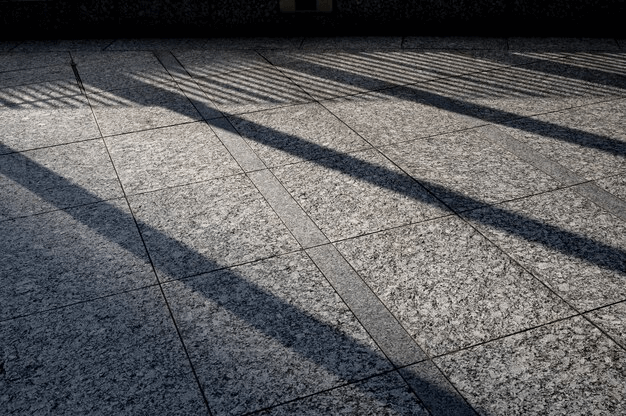
Exposed aggregate surfacing, being increasingly popular for its durability and aesthetic appeal, allows for versatile, textured, non-slip surfaces suitable for various outdoor structures. Sealing these surfaces is an essential process, enhancing the durability, maintaining longevity, and ensuring the color vibrancy. While the task can appear daunting, understanding the best practices and effective methods for sealing aggregate surfaces can help provide functional, visually attractive outcomes.
Understanding Exposed Aggregate Surfaces
Before delving into the intricacies of sealing the surface, it is essential to comprehend the exact nature of exposed aggregate materials. This decorative concrete technique exposes the aggregate—small stones, pebbles, quartz, and other premium decorative natural stones—within the concrete or plaster for a textured finish. This feature adds an aesthetically pleasing, robust quality to patios, driveways, and walkways, making it a favored choice among property owners. Understanding the composition of these exposed aggregates is crucial for selecting the appropriate sealing methods to enhance their longevity and visual appeal..
The Need for Sealing Aggregate Surfaces
Sealing exposed aggregate surfaces is essential for protecting them from damage due to weather, stains, and wear. The sealant forms a protective barrier that prevents water, salts, and other harmful substances from penetrating the surface. This preserves the surface’s appearance, improves the property’s overall appeal, and ensures a durable, long-lasting finish. Additionally, sealing maintains the surface’s slip resistance, making it safer for outdoor use, especially in wet or icy conditions. In summary, sealing exposed aggregate surfaces is crucial for both aesthetics and functionality.
Here are some best practices for sealing exposed aggregate surfaces.
Choosing the Right Sealant
There are various types of sealants available in the market, each tailored to specific needs and applications. For example, acrylic sealers are perfect for their UV stability and ease of application, making them a great choice for surfaces exposed to sunlight. For those seeking a high-gloss finish, solvent-based sealants are ideal, as they provide a shiny appearance that enhances the surface’s visual appeal. On the other hand, water-based sealants offer a natural, matte look, making them suitable for surfaces where a subtle finish is preferred.
In high-traffic areas, epoxy or polyurethane sealants excel due to their superior strength and resistance to wear and tear. These sealants can withstand heavy use and are often chosen for driveways, walkways, and commercial spaces. Ultimately, one’s choice of sealant depends largely on the desired aesthetic finish, the specific surface’s use, and environmental factors like exposure to sunlight or heavy foot traffic.
Preparation before Applying Sealant
Applying sealant on a clean, dry surface is fundamental for effective methods for sealing aggregate surfaces. Hence, thoroughly cleaning the surface to remove dust, grime, grease, or previous sealant layers is necessary. Professional pressure washing or grinding are good techniques for surface preparation, as they can efficiently eliminate stubborn contaminants. After cleaning, allow the surface to dry completely before applying the sealant. This drying period is crucial as it ensures the sealant adheres well to the surface, enhancing its effectiveness and longevity. By following these meticulous steps in surface preparation, you can maximize the benefits of sealing exposed aggregate surfaces.
Application of Sealant
The process of applying the sealant varies based on the sealer type. Spraying, for instance, is often the quickest and most convenient application method, providing even coverage and optimum penetration, making it well-suited for larger surface areas like driveways and patios. On the other hand, the use of a roller or a brush is appropriate for smaller areas or areas where precision is needed, such as edges, corners, or decorative patterns. This method allows for greater control over the application and is commonly employed for sealing smaller sections or intricate designs within exposed aggregate surfaces. Choosing the right application method ensures that the sealant is applied effectively and evenly, leading to a durable and aesthetically pleasing result.
Maintaining Sealed Exposed Aggregate Surfaces
To maintain the vibrancy and durability of a sealed exposed aggregate surface, keeping it clean is essential. Regular sweeping and cleaning with a mild detergent will effectively remove dirt and debris, preserving the surface’s original finish. Additionally, scheduling a re-application of the sealant every couple of years is a proactive measure that helps maintain the surface’s luster and extends its overall lifespan. By incorporating these simple maintenance practices, property owners can ensure that their sealed exposed aggregate surfaces continue to look great and remain resilient against the test of time.
Drawbacks of Not Sealing
Failure to seal or poor sealing practices can have detrimental effects on aggregate surfaces. Over time, this neglect can cause colors to fade, surface scaling to occur, and make the surface vulnerable to damage from freeze-thaw cycles, particularly in colder climates. Ultimately, these subpar sealing practices can result in significant, avoidable expenses, as property owners may need to invest in costly repairs, restoration, or even complete replacement of the affected surfaces. Proper sealing, on the other hand, helps protect the investment, ensuring the long-term durability and aesthetic appeal of exposed aggregate surfaces..
Steven Bennett
Related posts
Stay connected
- How LoveOn Chat Is Becoming the Most Versatile AI Companion for Digital UsersThe internet keeps shifting toward hyper-personal interaction, and AI companions are at the center of this shift. What used to be simple chatbots are now evolving into emotionally aware, adaptive, and multi-functional digital partners. Among the new generation of platforms, LoveOn Chat is becoming one... The post How LoveOn Chat Is Becoming the Most Versatile […]
